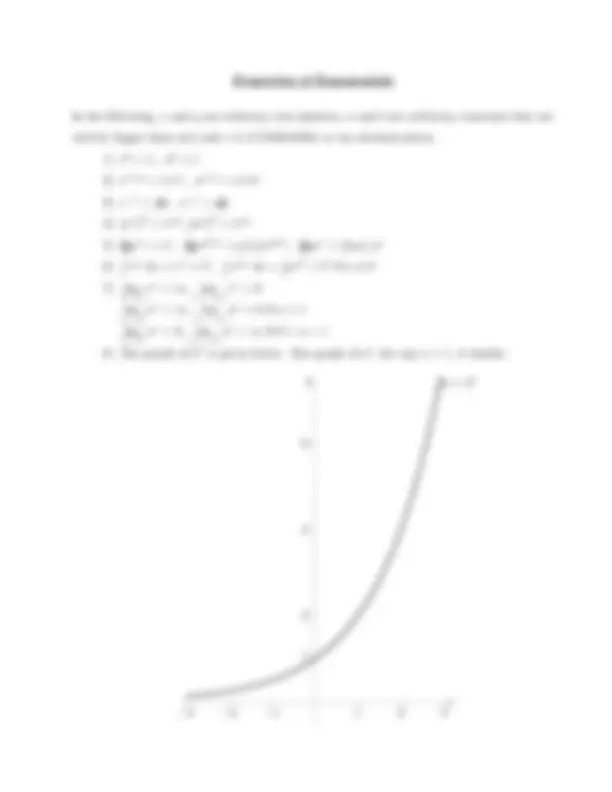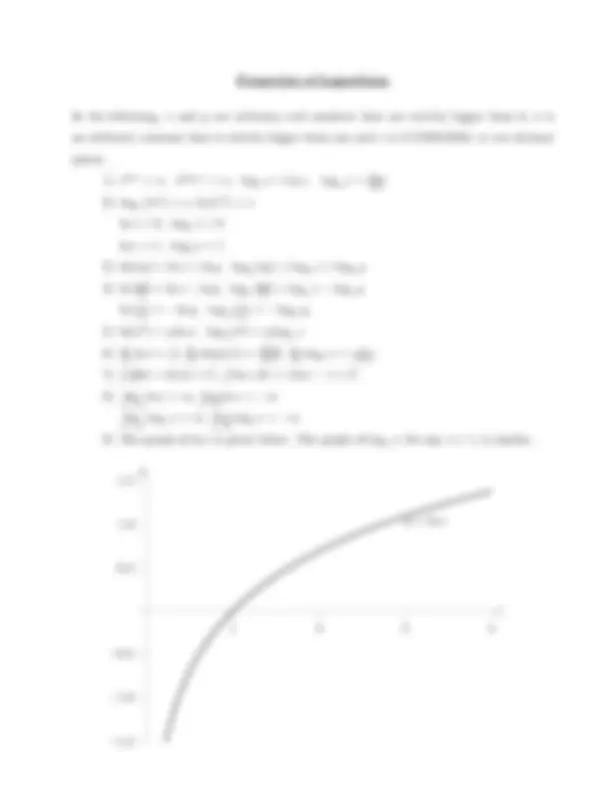




Study with the several resources on Docsity

Earn points by helping other students or get them with a premium plan


Prepare for your exams
Study with the several resources on Docsity

Earn points to download
Earn points by helping other students or get them with a premium plan
Community
Ask the community for help and clear up your study doubts
Discover the best universities in your country according to Docsity users
Free resources
Download our free guides on studying techniques, anxiety management strategies, and thesis advice from Docsity tutors
Throughout this table, a and b are given constants, independent of x and C is an arbitrary constant. f(x). F(x) = ∫ f(x) dx af(x) + bg(x).
Typology: Study notes
1 / 4

This page cannot be seen from the preview
Don't miss anything!



Table of Derivatives
Throughout this table, a and b are constants, independent of x.
F (x) F ′(x) = dF dx af (x) + bg(x) af ′(x) + bg′(x) f (x) + g(x) f ′(x) + g′(x) f (x) − g(x) f ′(x) − g′(x) af (x) af ′(x) f (x)g(x) f ′(x)g(x) + f (x)g′(x) f (x)g(x)h(x) f ′(x)g(x)h(x) + f (x)g′(x)h(x) + f (x)g(x)h′(x) f g ((xx)) f ′(x)g(x g)(−xf) 2 (x)g′(x) g(^1 x) −^ gg(′(xx))^2 f (g(x))^ f ′(g(x))g′(x) 1 0 a 0 xa^ axa−^1 g(x)a^ ag(x)a−^1 g′(x) sin x cos x sin g(x) g′(x) cos g(x) cos x − sin x cos g(x) −g′(x) sin g(x) tan x sec^2 x csc x − csc x cot x sec x sec x tan x cot x − csc^2 x ex^ ex eg(x)^ g′(x)eg(x) ax^ (ln a) ax ln x (^1) x ln g(x) g g′((xx)) loga x (^) x ln^1 a arcsin x √ 11 −x 2 arcsin g(x) √ 1 g−′(gx()x) 2 arccos x − √ 11 −x 2 arctan x (^) 1+^1 x 2 arctan g(x) (^) 1+g′g((xx)) 2 arccsc x − (^) x√ 11 −x 2 arcsec x (^) x√ 11 −x 2 arccot x − (^) 1+^1 x 2
Table of Indefinite Integrals
Throughout this table, a and b are given constants, independent of x and C is an arbitrary constant. f (x) F (x) = ∫^ f (x) dx af (x) + bg(x) a ∫^ f (x) dx + b ∫^ g(x) dx + C f (x) + g(x) ∫^ f (x) dx + ∫^ g(x) dx + C f (x) − g(x) ∫^ f (x) dx − ∫^ g(x) dx + C af (x) a ∫^ f (x) dx + C u(x)v′(x) u(x)v(x) − ∫^ u′(x)v(x) dx + C f (y(x))y′(x) F (y(x))^ where F (y) = ∫^ f (y) dy 1 x + C a ax + C xa^ x aa+1+1 + C if a 6 = − 1 (^1) x ln |x| + C g(x)ag′(x) g(x a+1)a+1 + C if a 6 = − 1 sin x − cos x + C g′(x) sin g(x) − cos g(x) + C cos x sin x + C tan x ln | sec x| + C csc x ln | csc x − cot x| + C sec x ln | sec x + tan x| + C cot x ln | sin x| + C sec^2 x tan x + C csc^2 x − cot x + C sec x tan x sec x + C csc x cot x − csc x + C ex^ ex^ + C eg(x)g′(x) eg(x)^ + C eax^1 a eax^ + C ax^ ln^1 a ax^ + C ln x x ln x − x + C √ 11 −x 2 arcsin x + C √^ g′(x) 1 −g(x)^2 arcsin^ g(x) +^ C √a (^21) −x 2 arcsin x a + C 1+^1 x^2 arctan^ x^ +^ C 1+^ g′g((xx))^2 arctan^ g(x) +^ C a^2 +^1 x^21 a arctan^ x a +^ C x√ 11 −x^2 arcsec^ x^ +^ C
Properties of Logarithms
In the following, x and y are arbitrary real numbers that are strictly bigger than 0, a is an arbitrary constant that is strictly bigger than one and e is 2.7182818284, to ten decimal places.
x
y
y = ln x